Montreal Canadiens: Breaking Down Marc Bergevin’s Tenure: 5 Best Trades

The Montreal Canadiens hired Marc Bergevin in 2012. Seven years into his tenure he has been a polarizing figure for the Habs. Here we break down the five best trades made by the Canadiens current general manager.
The Montreal Canadiens brought in Marc Bergevin after they had enough of Pierre Gauthier as the team’s general manager. The Canadiens missed the postseason in 2012, after losing in the first round of the playoffs the year before. They brought in Bergevin who had been working under Stan Bowman with the Chicago Blackhawks for the previous seven years as a scout, assistant coach and assistant general manager.
It became apparent early on that Bergevin was going to target physicality while keeping a close eye on the salary cap when making signings and trades. His first few free agent signings were gritty players like Colby Armstrong, Francis Bouillon and Brandon Prust.
His first few trades were minor moves that saved salary cap space in the long term. He dealt Rene Bourque to the Anaheim Ducks for Bryan Allen whose contract was up a year earlier. He dealt Travis Moen to the Dallas Stars for Sergei Gonchar who had a higher cap hit but less term than Moen.
We still see those characteristics in Bergevin today. He loves a gritty player and always seems to acquire a few of them every year. He also has not come close to spending to the cap the past two seasons and has plenty of cap space to work with again next season.
When you look at his trade record over his seven years at the helm of the Habs, there aren’t many that jump out at either end of the spectrum as exceptional or awful. Bergevin has certainly made big trades, but I would attest he has not made a lot of very risky trades. When he dealt P.K. Subban, he got a right-shot top-pairing defence man in return.
There aren’t many safer bets in the league than Shea Weber’s steadying presence on the blue line. It would have been far riskier to take on prospects and draft picks which was rumoured to be close to happening at the time. Subban was traded in 2016 shortly after the NHL Draft. There were rumours Subban was being dangled for either the 4th overall pick which was held by the Edmonton Oilers, or the 5th overall pick which the Vancouver Canucks owned.
Bergevin was trying to get a top five pick so he could select Pierre-Luc Dubois, who surprisingly went third overall to the Columbus Blue Jackets. Once Dubois was out of reach, the Subban rumours subsided – for a few days.
Bergevin then traded his top pairing right shot defender for another player who fits the same bill. The same scenario played out when Alex Galchenyuk was traded for Max Domi. Struggling top six forward for struggling top six forward.
A lot of Bergevin’s trades are like this. There are not many trades, even after seven years, where you can say he fleeced the other team, or he made a huge error.
However, there are a handful of trades that helped the Canadiens improve their lineup for sure. Let’s take a look at the best five.
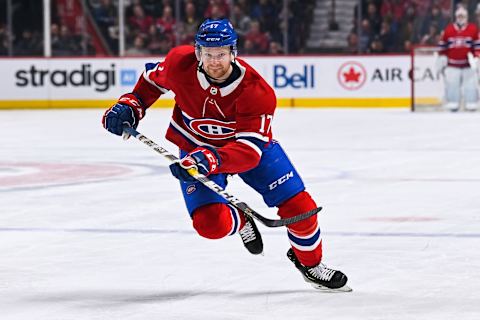
5. Montreal Canadiens acquire Brett Kulak for Matt Taormina and Rinat Valiev.
The Montreal Canadiens had all but wrapped up training camp last season when they made what seemed to be a minor trade. They sent minor league defenders Matt Taormina and Rinat Valiev to the Calgary Flames for defenceman Brett Kulak.
With Victor Mete, Jordie Benn, Xavier Ouellet, Karl Alzner and Mike Reilly already on the left side of their defence, it appeared they had just swapped two AHL defenders for another one to open up a roster spot on the Laval Rocket.
Kulak had played 71 games with the Calgary Flames in 2017-18, scoring eight points. With a number of young defencemen looking to crack the roster in Alberta, they shipped him out for some minor league depth after he passed through waivers.
That’s right. He had already been on waivers, meaning the Canadiens preferred to give up Taormina and Valiev than get Kulak for nothing. It sounds odd, but you can only have 50 contracts so getting Kulak and subtracting a contract was better than getting him and adding a contract. However, it does suggest that Valiev and Taormina had microscopic value.
Kulak started last season with the Laval Rocket. He scored 11 points in 19 games before being called up to the Habs. He didn’t look back and got better and better as the year went on earning a more prominent role in the process. He ended up playing 57 games and scoring 17 points while forming a great second pairing with Jeff Petry.
Taormina scored zero goals and seven points in 31 games with the Stockton Heat. Valiev fared a little better, scoring 21 points in 57 games for the Heat, but neither defender earned a recall to the NHL last season. That means the Habs got a player who fit in well on their second pairing for two guys who could not even stay in an AHL lineup on a nightly basis.
Going forward, it is more likely that Kulak plays a third pairing role for the Habs and not a top four role like he did late last season. Still, a reliable defender who fully deserves the three-year, $1.85 million contract he signed to stay in Montreal long term for a couple of depth minor leaguers is a tremendous trade for Marc Bergevin.
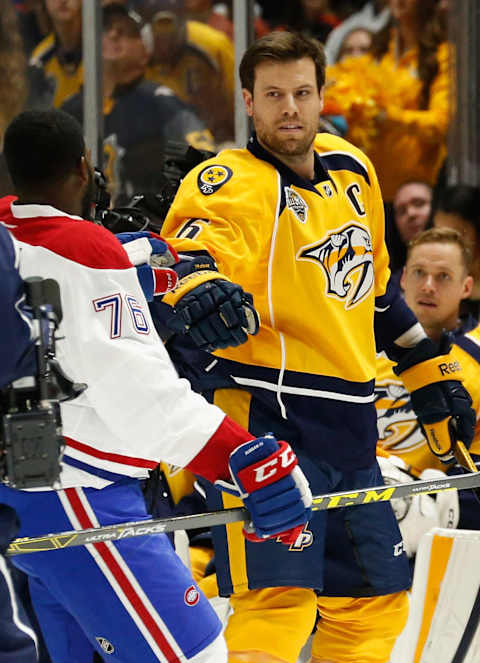
4. Montreal Canadiens acquire Shea Weber for P.K. Subban
It was a wild afternoon in late June for the National Hockey League. Steven Stamkos, one of the best goal scorers of his generation, signed a massive contract extension with the Tampa Bay Lightning and it was the third biggest story of the hour.
Taylor Hall for some reason was traded straight up for Adam Larsson. Hall went on to win a Hart Trophy while Larsson has failed to win the hearts of anyone in Edmonton.
Of course, P.K. Subban, one of the most polarizing figures in Montreal Canadiens history was dealt for Shea Weber that afternoon as well. June 29th isn’t normally a very busy day in the NHL. The draft is over by then and there is a few more days to get organized before free agency. It is usually a lull between two of the busiest days on the calendar.
However, Marc Bergevin got in on the act that day and acquired Shea Weber. His first season with the Habs, Weber scored 17 goals and 42 points in 78 games. He helped anchor the team defensively and obviously chipped in plenty of offence as well. The Habs had a strong season as they finished with 103 points and won their division.
Weber’s past two seasons have been injury plagued and he has been held to just 84 games over those two years combined. He has scored 20 goals and 49 points in that time, suggesting he hasn’t slowed down at all while he is on the ice.
Weber heads into next season fully healthy and is poised for another huge year. He has a rocket of a shot that makes him one of the best goal scoring defenders in the league, and at 6’4″ and 229 pounds he has no trouble shutting things down in his own zone either.
Subban was dealt by the Nashville Predators after three seasons with the team. He was held to 31 points in 63 games last season and the Predators clearly weren’t happy with him earning $9 million against the salary cap for the next three seasons.
I, for one, am quite happy the Canadiens have the defenceman who scored goals at a higher pace than any other blue liner last season and not the defenceman who was dealt for a depth player, a middling prospect and a couple of second round picks.
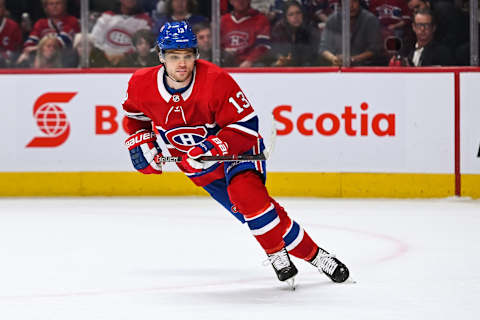
3. Montreal Canadiens acquire Max Domi for Alex Galchenyuk
Marc Bergevin went out on a limb when he traded a fan favourite in Alex Galchenyuk for Max Domi. The Habs had struggled to score goals in the 2017-18 season and then traded one of their best goal scorers for someone who was coming off consecutive nine goal seasons.
Domi had a good rookie season with the Arizona Coyotes in 2015-16, scoring 18 goals and 52 points in 81 games. However, he wasn’t able to duplicate those numbers in either of the next two seasons. In fact, over the following two seasons, he scored 18 goals combined.
Galchenyuk, who is just one year older than Domi, outscored the newcomer by ten goals and six points in the season before the deal. Galchenyuk had a 30 goal season on his resume and was one of the few Canadiens players capable of scoring more than 20. The Habs were taking a big risk dealing him for a player who scored nine goals for two straight years.
Luckily, Bergevin was right when he said Domi would thrive after being dealt to a hockey market like Montreal. Bergevin believed that Domi is a passionate hockey player who was being held back by playing in front of tiny crowds for a struggling team in Arizona.
It seemed a bit optimistic to me. Just bring a player from Arizona to Montreal and that will make him a better hockey player? If he is so good, why would he need to play in a specific market to excel? It didn’t seem right.
It was right.
Domi has played just one season in Montreal but it was his best year by far in the National Hockey League. He scored 28 goals, coming fairly close to matching his three season total of 36 with the Coyotes. He led the team with 72 points. Not only was this the best among Habs skaters, it was the third best season by a Canadiens player in the 21st century. Only Saku Koivu and Alex Kovalev were able to put together better seasons than Domi’s in the past twenty years.
Meanwhile, Galchenyuk scored 19 goals for the Coyotes and finished with 41 points. Domi transitioned to centre seamlessly in Montreal, and Galchenyuk failed to prove he could play down the middle.
Galchenyuk was traded already by the Coyotes, who shipped him to the Pittsburgh Penguins after just one season in the desert. Domi, on the other hand has proven to be the elusive first line centre the Habs have been desperate to find for about two decades.
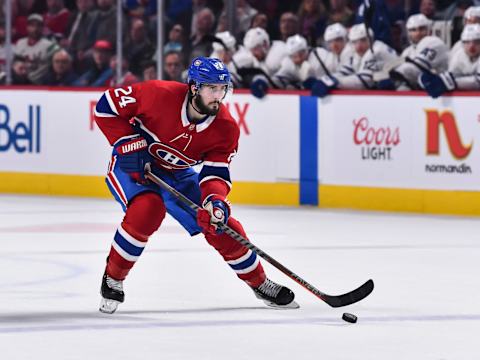
2. Montreal Canadiens acquire Phillip Danault and a 2nd round pick for Tomas Fleischmann and Dale Weise
The Montreal Canadiens were not a good hockey team in the 2015-16 season. Carey Price was injured early in the year and their chances at a playoff berth evaporated with his absence. They were off to a hot start in October, but without Price, and only having Mike Condon and later Ben Scrivens to lean on, things quickly fell apart.
As the trade deadline approached there was no discussion of what approach the Habs would take as they were an obvious seller. The problem was they didn’t have a lot of expiring contracts that are typically “sold” at the deadline.
The only two players they had that were unrestricted free agents at the end of the year and could get a return were wingers Dale Weise and Tomas Fleischmann. The problem was, neither of them were having particularly great seasons and therefore weren’t expected to fetch an enormous return.
Weise, for some reason, continued to slot in on the Habs top line with Max Pacioretty. I’ll give him credit, he gave the Montreal Canadiens everything he had, but he just isn’t and wasn’t a skilled enough player to be playing a top six role. When the time came to trade him, he had 14 goals and 26 points in 56 games.
Decent numbers, but not great when you consider he was playing first line ice time and getting favourable minutes on the man advantage.
Fleischmann actually got off to a tremendous start after showing up to camp on a professional tryout. He had seven goals and eight assists for 15 points in his first 22 games. When the trade deadline arrived, he had ten goals and ten assists in 50 games. That means he had five points in his last 28 games.
Somehow, Bergevin was able to turn these two fourth line wingers into an excellent return. He shipped them both to the Chicago Blackhawks who were in full “go-for-it mode” and received first round pick Phillip Danault along with a second round draft pick in return.
Last season, Danault centred one of the best two-way lines in the league with Tomas Tatar (more on him in a minute) and Brendan Gallagher. Danault had 53 points in 81 games while earning top ten recognition for the Frank J. Selke Award as the best defensive forward in the NHL.
The second round pick, although acquired in 2016, was for the 2018 NHL Draft. It is highly unusual to acquire a pick for three drafts down the road, but it was a crafty move by Bergevin. The Blackhawks were a powerhouse in 2016 and their second round pick was late in the round. By 2018, the Blackhawks were a struggling team and their second round pick was the seventh pick of the round. Waiting two extra years moved the pick from 52nd to 38th.
With that second round pick, the Canadiens grabbed Russian defenceman Alexander Romanov. The skilled two-way defender was the youngest defenceman to make the KHL last season and won the best defenceman award at the World Juniors, though he was 18 years old and most players receiving recognition at the tournament were a year older.
If Danault can maintain his play from last season and Romanov continues to develop the way he has since the Canadiens drafted him, this trade will look even better in a few years. It appears now that Marc Bergevin acquired one of the best second line centres in the league and a top pairing defenceman for two depth pieces who were about to leave the team via free agency anyway.
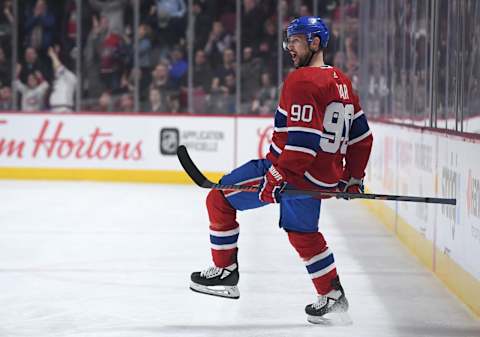
1. Montreal Canadiens acquire Tomas Tatar, Nick Suzuki and a second round pick for Max Pacioretty.
Max Pacioretty was one of the best players to play for the Montreal Canadiens in the past two decades. He was certainly the best goal scorer they had in that time. He reached the 30-goal plateau five times and had 60 points each of those seasons. You could pretty much guarantee going into a season for a while that you were going to get 30 goals and 60 points from the left winger.
He had one down season with the Canadiens and it was the penultimate year on his bargain of a six-year contract that paid him just $4.5 million annually. Heading into the final year of that deal, Bergevin decided it was time to trade his best goal scorer and team captain.
He was able to swing a deal with the Vegas Golden Knights. Vegas had just made a surprise run to the Stanley Cup Final as an expansion team and was hoping to at least repeat that feat. They made several trades around their expansion draft process that allowed them to make three first round picks in 2017.
One of those picks was Nick Suzuki, and he was the key piece in the Pacioretty trade. The Canadiens, with tons of cap space at the time, were also willing to take on the remaining three years of Tomas Tatar’s contract and received a second round pick as well.
The Knights were willing to include Tatar in the trade because he struggled in his short time in Vegas. He was acquired for first, second and third round picks at the trade deadline, but was a healthy scratch for much of their playoff run. He had just six points in 20 regular season games and two more points in eight playoff contests.
Tatar played five seasons with the Detroit Red Wings before being shipped to Vegas and was a proven 20 goal and 45 point threat. Bergevin was willing to roll the dice and take on $4.6 million for three seasons assuming Tatar would bounce back.
Tatar certainly did bounce back in his first year in Montreal. He hit 25 goals for the third time and set a career high with 58 points. Pacioretty meanwhile, scored 22 goals and 40 points in 66 games for Vegas. He signed a four-year extension worth $7 million per year.
I would rather the last few years of Tatar’s contract than four more years of a 30-year-old Pacioretty at $7 million. Plus, you get Nick Suzuki and the draft pick(s)? What a steal!
Suzuki had his third straight tremendous season in the OHL and was incredible in the postseason for the Guelph Storm. He scored 94 points, after putting up 96 and 100 in the two previous seasons. He capped off his Junior career with 42 points in 24 playoff games.
The pick ended up being 50th overall but the Habs flipped it to the Los Angeles Kings for the 64th and 126th selections. With those they selected Mattias Norlinder and Jacob Leguerrier. Norlinder is admired by scouts in Sweden who saw him play for Modo in Allsvenskan last season.
Leguerrier is a longer shot prospect but Bergevin has had some luck with fifth round picks in the past. Even if he flames out, Tatar outscored Pacioretty last season and has two years left on his deal where he figures to be on the Habs top line. Suzuki was one of the best players in Junior hockey and could soon be a force as a centre or a goal-scoring right winger. Norlinder is just 18 but has lots of potential to turn into a top four defenceman in the future.
dark. Next. Can Byron Play a Top Six Role Next Season?
That is quite a haul. Pacioretty was a great player for the Canadiens and it must have been tempting to re-sign him. However, the trade Bergevin pulled off immediately made the Montreal Canadiens better and set them up for future success. It was, without a doubt, his finest trade to date as the general manager of the Habs.